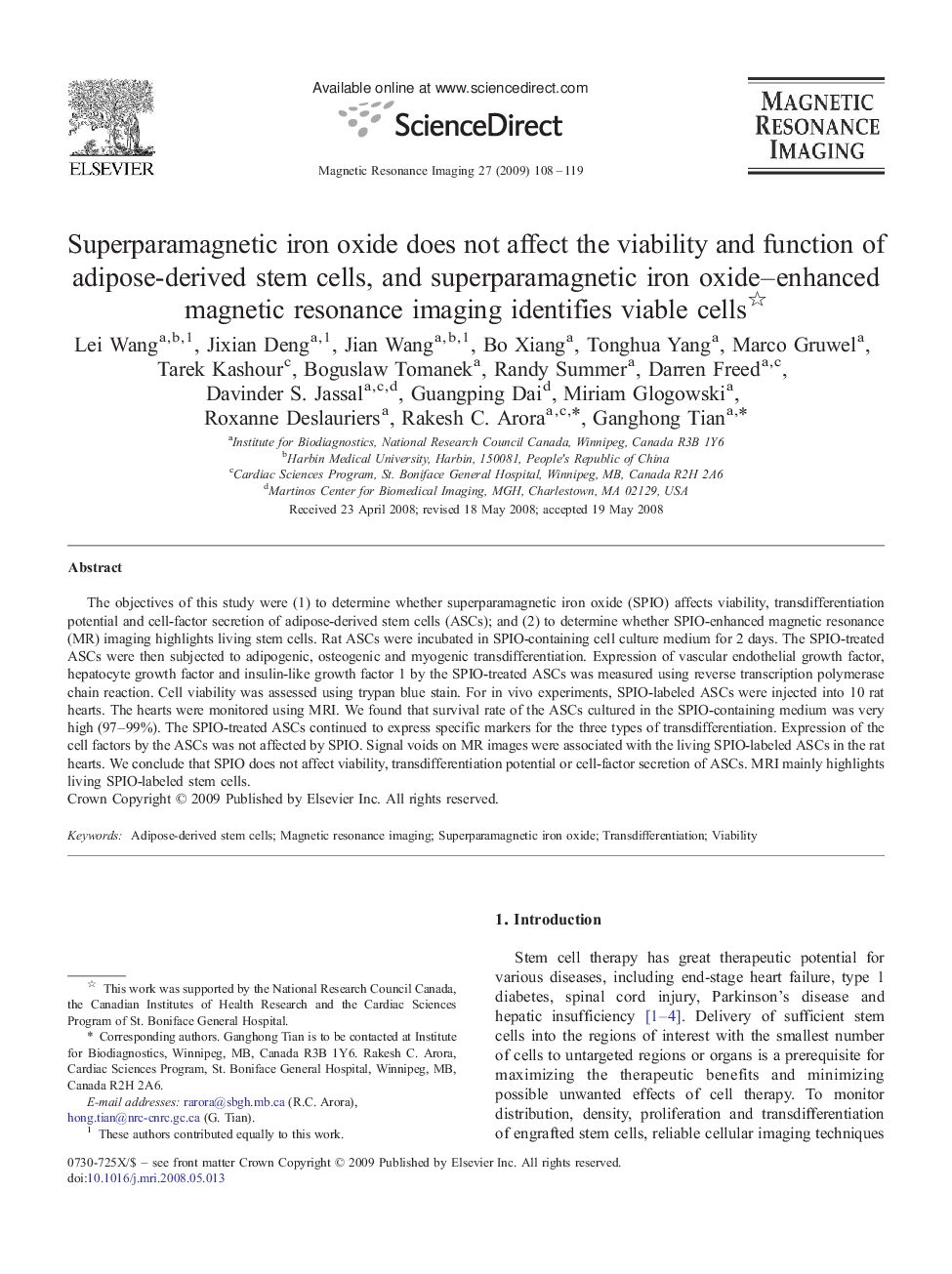| Article ID | Journal | Published Year | Pages | File Type |
|---|---|---|---|---|
| 1807933 | Magnetic Resonance Imaging | 2009 | 12 Pages |
Abstract
The objectives of this study were (1) to determine whether superparamagnetic iron oxide (SPIO) affects viability, transdifferentiation potential and cell-factor secretion of adipose-derived stem cells (ASCs); and (2) to determine whether SPIO-enhanced magnetic resonance (MR) imaging highlights living stem cells. Rat ASCs were incubated in SPIO-containing cell culture medium for 2 days. The SPIO-treated ASCs were then subjected to adipogenic, osteogenic and myogenic transdifferentiation. Expression of vascular endothelial growth factor, hepatocyte growth factor and insulin-like growth factor 1 by the SPIO-treated ASCs was measured using reverse transcription polymerase chain reaction. Cell viability was assessed using trypan blue stain. For in vivo experiments, SPIO-labeled ASCs were injected into 10 rat hearts. The hearts were monitored using MRI. We found that survival rate of the ASCs cultured in the SPIO-containing medium was very high (97-99%). The SPIO-treated ASCs continued to express specific markers for the three types of transdifferentiation. Expression of the cell factors by the ASCs was not affected by SPIO. Signal voids on MR images were associated with the living SPIO-labeled ASCs in the rat hearts. We conclude that SPIO does not affect viability, transdifferentiation potential or cell-factor secretion of ASCs. MRI mainly highlights living SPIO-labeled stem cells.
Keywords
Related Topics
Physical Sciences and Engineering
Physics and Astronomy
Condensed Matter Physics
Authors
Lei Wang, Jixian Deng, Jian Wang, Bo Xiang, Tonghua Yang, Marco Gruwel, Tarek Kashour, Boguslaw Tomanek, Randy Summer, Darren Freed, Davinder S. Jassal, Guangping Dai, Miriam Glogowski, Roxanne Deslauriers, Rakesh C. Arora, Ganghong Tian,
